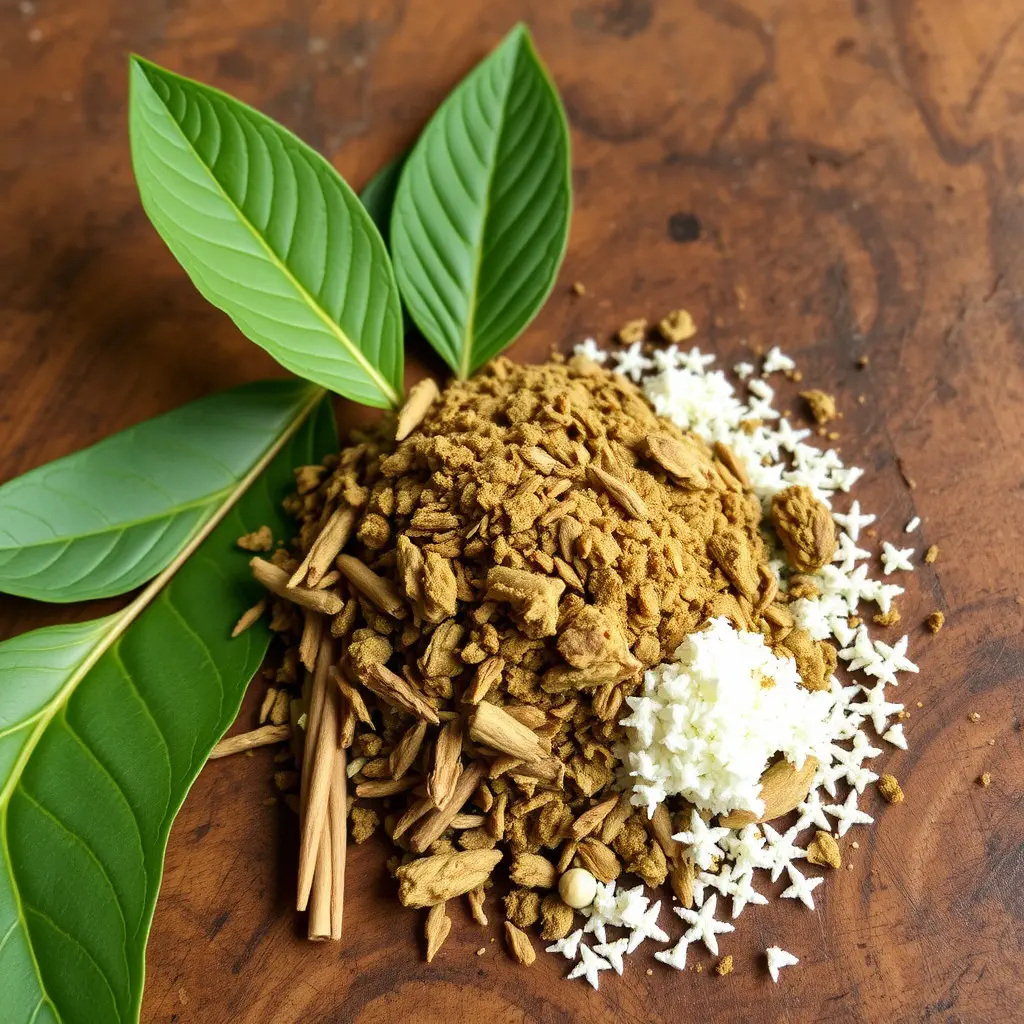Indiana has officially classified kratom, a substance derived from Mitragyna speciosa leaves, as a Schedule I controlled substance under its state law, imposing strict regulations on its possession, sale, and distribution. For those in Indiana interested in using kratom for endurance training enhancement, it is imperative to adhere to these laws to prevent legal issues. The state's kratom law sets clear guidelines for its use, which is crucial for both consumers and vendors. Kratom contains alkaloids that may offer benefits for stamina and pain management, but its use should be approached with caution. Athletes and fitness enthusiasts are advised to consult healthcare professionals before incorporating it into their training due to legal constraints and potential health implications. It's important for individuals to stay informed about Indiana's specific kratom regulations to ensure safe and compliant use. When considering kratom for athletic performance, especially in endurance training, prudence is necessary to assess safety and efficacy. The Indiana kratom law allows for its legal use within the state, distinguishing it from controlled substances, but users must be aware of and comply with these regulations. Understanding the effects of different kratom strains, like Maeng Da and Bali for stimulation or Red vein for recovery, is crucial, as is monitoring dosage to manage individual sensitivity and avoid adverse effects. Athletes should integrate kratom into their training routines under the guidance of professionals to ensure it complements other performance-enhancing strategies in a manner consistent with Indiana's kratom law.
Exploring the intersection of natural supplementation and athletic prowess, our article delves into how kratom, under the scrutiny of Indiana’s legislative framework, can be strategically integrated into endurance training regimens. We will navigate the legal landscape surrounding kratom in Indiana, discuss the safest and most effective ways to incorporate this botanical into your training, and offer insights on dosage, strain selection, and optimal practices for enhancing endurance performance. Join us as we explore the potential benefits of kratom for athletes looking to push their limits further.
- Navigating Indiana's Kratom Legislation: A Primer on Endurance Training Enhancement
- Integrating Kratom into Your Endurance Training Regimen: Safety and Efficacy Considerations
- Maximizing Athletic Performance with Kratom: Dosage, Strains, and Best Practices for Endurance Athletes
Navigating Indiana's Kratom Legislation: A Primer on Endurance Training Enhancement

navigating Indiana’s kratom legislation is a critical step for individuals interested in exploring its potential role in endurance training enhancement. As of recent updates, Indiana has established specific regulations governing the use and sale of kratom, which is derived from the leaves of the Mitragyna speciosa tree. Understanding these laws is paramount to ensure legal compliance while pursuing performance improvements through this botanical supplement. The Indiana kratom law categorizes kratom as a synthetic chemical under Schedule I of controlled substances, which imposes strict controls on its possession, sale, and distribution. This legislative framework requires diligent adherence by consumers and vendors alike, setting clear boundaries for safe and legal use.
For athletes or fitness enthusiasts in Indiana looking to leverage kratom as part of an endurance training regimen, it is imperative to align with the state’s regulations. Kratom is often cited for its potential to boost stamina and endurance due to its alkaloid content, which may influence pain perception and energy levels. However, the integration of kratom into a training program must be approached with caution and informed by reliable sources. It is essential to consult with healthcare professionals before incorporating kratom into any fitness routine, especially considering Indiana’s stringent legal standing on its use. By staying abreast of the local legislation and understanding the potential effects of kratom on physical endurance, individuals can make informed decisions that align with both their health goals and legal obligations.
Integrating Kratom into Your Endurance Training Regimen: Safety and Efficacy Considerations

When incorporating Kratom into your endurance training regimen, it’s crucial to be mindful of both the safety and efficacy implications. Kratom, a botanical derived from the leaves of Mitragyna speciosa, has been a subject of interest for athletes seeking to enhance performance and endurance due to its alkaloid content, which can influence pain perception and energy levels. However, it’s essential to approach its use with caution, especially in light of varying legal statuses, such as the specific regulations outlined by the Indiana kratom law. In Indiana, for instance, the legal landscape dictates that Kratom is not a controlled substance, allowing individuals to explore its potential benefits within the framework of their training. Users should adhere to these legal guidelines and consult with healthcare professionals before integrating Kratom into their routine to ensure they understand its effects and how it may interact with other substances or supplements. Additionally, monitoring dosage and frequency is key to mitigating potential risks associated with Kratom use, ensuring that endurance training benefits from the substance without compromising health. Proper dosing and adherence to a balanced training program can help athletes achieve their endurance goals while maintaining safety and compliance with local regulations like those set forth by the Indiana kratom law.
Maximizing Athletic Performance with Kratom: Dosage, Strains, and Best Practices for Endurance Athletes

Endurance athletes are continually seeking ways to enhance their performance and recovery. Kratom, a plant-based supplement derived from the leaves of Mitragyna speciosa, has gained attention in athletic circles for its potential ergogenic properties. When considering the use of kratom for performance enhancement, adherence to safe dosage guidelines is paramount. Athletes should start with a low dose to gauge individual sensitivity and gradually adjust according to personal tolerance and response.
The strains of kratom used can also influence performance. Strains such as Maeng Da and Bali are often favored for their balanced effects on energy and mood without the sedative properties associated with higher doses. Red vein strains, known for their calming and analgesic effects, can aid in recovery by reducing muscle soreness, which is crucial for endurance training that typically involves high-impact and repetitive movements. It’s important to note the legal status of kratom, as per Indiana kratom law, which regulates its use and sale within the state boundaries. Athletes must ensure they are in compliance with these regulations to avoid any legal repercussions that could jeopardize their training and competition. Additionally, integrating kratom into a training regimen should be done alongside professional guidance to align with best practices and ensure it complements other training methods for optimal endurance performance.
In Indiana, understanding and complying with kratom legislation is a critical first step for endurance athletes looking to enhance their performance through this botanical supplement. This article has outlined the necessary legal considerations, detailed how to safely incorporate kratom into an endurance training regimen, and provided insights on optimal dosage, strains, and best practices tailored for athletes. It is clear that with careful implementation and adherence to safety protocols, kratom can be a valuable tool in the pursuit of improved endurance. However, it is imperative to stay informed about the evolving landscape of Indiana’s kratom law to ensure compliance and responsible use. Athletes are encouraged to consult with healthcare professionals before integrating kratom into their training, ensuring a balanced and legal approach to performance enhancement.






